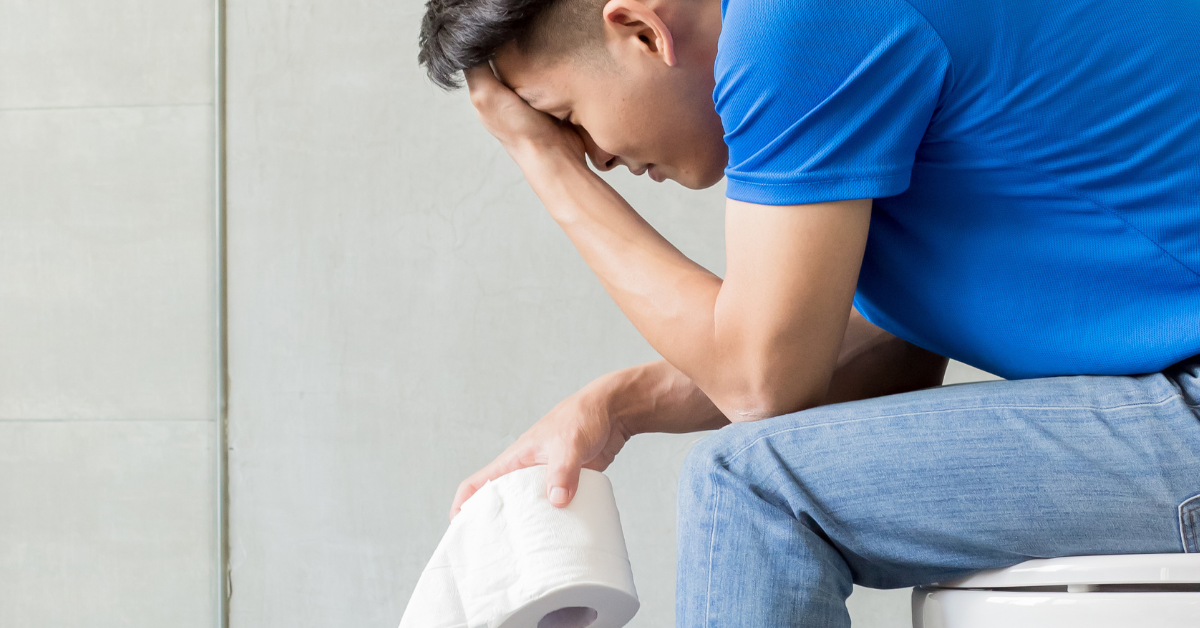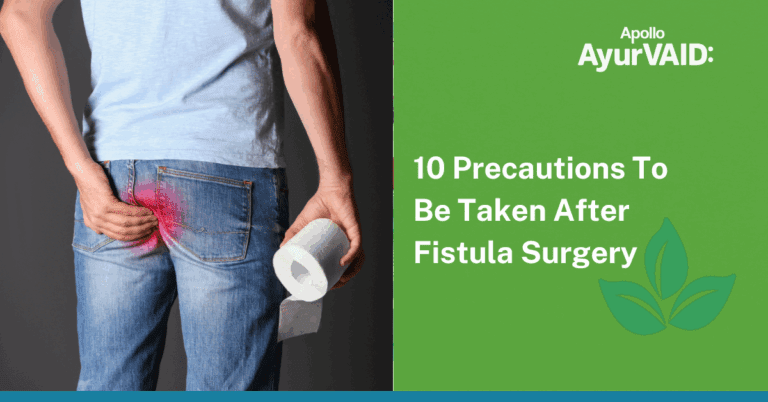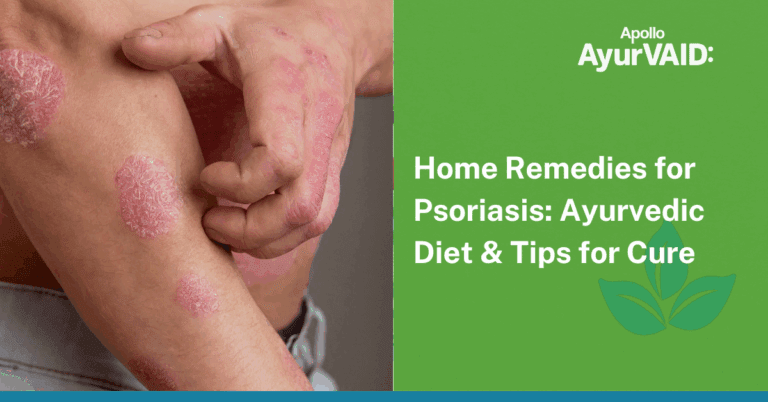Introduction
Haemorrhoids or piles are a prevalent anorectal condition characterised by swollen, inflamed veins around anus or the lower part of rectum. Multiple factors have been claimed to be the causes of haemorrhoids, including constipation and prolonged straining. Symptoms of haemorrhoids include rectal pain, itching, bleeding, and possibly prolapse (haemorrhoids that protrude through the anal canal). Haemorrhoids are usually not life-threatening, but they are painful and come back often, making regular activities difficult. This blog explores the causes, symptoms, complications, Ayurveda treatment for haemorrhoids, and answers the most frequently asked question- can haemorrhoids be cured?

What are Haemorrhoids?
Haemorrhoids develop when veins around the anus swell and distend, similar to varicose veins in the legs. This is thought to be a consequence of being upright animals, as the blood vessels have to work against gravity to return blood to the heart. Haemorrhoids are of two types:
- Internal haemorrhoids arise in the lower rectum and don’t cause any noticeable symptoms. Painless bleeding might be seen as bright red blood in the toilet or toilet paper after wiping.
- External haemorrhoids grow beneath the skin surrounding the anus. They are the most unpleasant as the skin surrounding the anus is very sensitive causing a lot of discomfort and pain. The excess skin that forms as a result of the stretching and swelling is known as a skin tag, and causes irritation and itchiness until the swelling goes down.
Stages of Haemorrhoids
- Grade I: Internal haemorrhoids with no prolapse. Prominent blood vessels may be seen.
- Grade II: Prolapses on bearing down, but quickly reduces on its own.
- Grade III: Prolapses upon bearing down, requires manual reduction.
- Grade IV: Complete prolapse that cannot be manually reduced.
Haemorrhoids In Ayurveda
Ayurveda views Arsha (piles) as a major health problem that is impacted by one’s diet and lifestyle choices and is associated with Mandagni, or low digestive fire. It is described as one of the Ashtamahagada or eight difficult-to-cure diseases that are chronic and significantly affect quality of life. A sedentary lifestyle and poor eating habits are the main causes of low Jatharagni or digestive fire, which in turn causes constipation, itching, burning, and discomfort in the Guda or anal area, and eventually bleeding, which is the root cause of Arsha Roga.
The imbalance of Jatharagni, vitiates the Tridoshas, most notably Vata Dosha, which settle in Gudavali or internal folds of anus and vitiates Twak (skin), Mamsa (muscle), and Meda Dhatus (fat tissue). Let us now explore the causes of haemorrhoids.
Causes of Haemorrhoids
Haemorrhoids have been linked to several health issues, including chronic constipation, straining during defecation, and prolonged sitting on the toilet. These factors impede blood flow, resulting in the swelling and pooling of veins and arteries in the anus. Pregnancy and childbirth are common causes of haemorrhoids, as the expanding uterus applies pressure on the veins and bearing down, resulting in irritation.
A new research indicates that haemorrhoids are associated with an elevated resting anal canal tone, characterized by a smooth muscle of the anal canal; that is tighter than usual (even in a non-stretched state). Constipation exacerbates this by increasing pressure on the anal canal when straining, pushing the haemorrhoids against the sphincter muscle. With aging, the connective fibers that typically hold the haemorrhoids weaken, resulting in their bulging and displacement from their normal position.
Symptoms of Haemorrhoids
The typical symptoms of haemorrhoids include a lack of appetite, pain and discomfort in the anal area, constipation, swelling, headache, vomiting, bleeding per rectum, backache and emaciation.
- Mala Vibandha, or constipation: Hard stools or trouble passing bowel due to vitiated Vata or mechanical blockage from mass piles.
- Gudagaurava or feeling of heaviness around anus: The pile mass blocks the stool passage, causing feeling of pressure in the anal area.
- Gudashula or anal discomfort: Sharp, throbbing pain in the anal region while passing stool.
- Raktasrava or Bleeding per rectum: Expulsion of blood from the anus either during or after passing stool due to rupture of pile masses.
- Kandu, or itching: Constant itching around the anal area brought on by inflammation or or discharge.
- Srava or discharge: In Pittaja and Kaphaja Arshas, pile mass can have unctuous, foul-smelling discharge.
- Gudapaka or burning feeling in the anus: Severe burning sensation in the anal area due to aggravation of Pitta/inflammation of the pile mass.
- Udarashoola or lower abdominal discomfort: Due to constipation and abdominal distention.
- Angamarda, or body pain: Generalised bodily discomfort due to either blood loss, persistent constipation, or related systemic diseases.
Complications of Haemorrhoids
Haemorrhoids may present discomfort and pain; however, they typically do not lead to significant complications. Some complications of haemorrhoids include:
- Anemia
- Blood clots associated with external haemorrhoids
- Infection
- Skin tags or small flaps of tissue that protrude from the skin
- Strangulated haemorrhoids occur when the muscles in the anus restrict blood flow to a prolapsed internal haemorrhoid.
Ayurveda Treatment for Haemorrhoids
In Ayurveda, the primary principle for addressing a disease is to identify and eliminate its root cause while preventing contributing factors. Ayurveda treatment for haemorrhoids has four therapeutic modalities, which are applied according to the extent of dosha involvement.
- Bheshaja Chikitsa
Bheshaja Chikitsa (Medical management) is the primary treatment approach for early-stage piles characterized by minimal symptoms, specifically in 1st to 2nd-degree cases. Herbs possessing Ushna Veerya (hot potency), Deepana (appetiser), Pachana (digestive), Vatanulomana (carminative), and Srotosodhana (channel purifier) properties are effective in Samprapti Vighatana (breaking the disease pathogenesis). Local applications are effective in alleviating the pain and discomfort associated with Arshas.
- Kshara Karma
Kshara, prepared from the ashes of medicinal herbs, is applied locally to shrink pile masses. Teekshna Kshara (strong caustic) is used for Vataja and Kaphaja Arsha, while Mrudu Kshara (mild caustic) is preferred for Pittaja and Raktaja Arsha. Ksharakarma can be applied both externally and internally in treatment for haemorrhoids. It serves as an effective alternative for patients who have apprehensions about undergoing surgery, providing a viable option in place of surgical instruments.
- Agni Karma
Agnikarma involves using controlled heat to burn and shrink the pile mass. It is often recommended for hard, large, and persistent Arsha and is considered superior to Kshara Karma in treatment for haemorrhoids as it prevents recurrence.
- Shastra Karma
In cases where conservative measures are ineffective, Arshas is addressed through Shastra Karma or surgical intervention. The Arshas that are large and have discharge should be addressed through Shastra treatment.
Apollo AyurVAID’s Treatment for Haemorrhoids
At Apollo AyurVAID, treatment for haemorrhoids is done using an evidence-based strategy that targets the root cause of the problem. Our approach places a strong emphasis on treatment that is tailored to encourage recovery, stop recurrence, and enhance digestive health.
To determine the severity of haemorrhoids, a physical examination and proctoscopy are done while analysing lifestyle, bowel habits, digestion, stress levels, posture, etc. Customised therapy regimens combine internal medications with traditional Ayurveda treatments, including Kshara Sutra, to treat piles while maintaining the tone of the anal sphincter muscles. Recurrence is avoided by following appropriate dietary guidelines and lifestyle. A step-by-step plan of treatment is planned after regularly monitoring symptoms like bleeding, discomfort, inflammation, and bowel movements to ensure long-term freedom from the symptoms of haemorrhoids.
Apollo AyurVAID provides a precision Ayurveda treatment for haemorrhoids that ensures a speedy recovery and quick return to work by offering long-lasting relief from discomfort, itching, and bleeding. Choosing Apollo AyurVAID’s Precision Ayurveda ensures safe, personalized, and minimally invasive treatment, helping individuals regain their health and well-being naturally.

References
Dr. Nikhil S, Dr. Geetha B. Markande, & Dr. Prashanth Jain. (2020). Understanding the etiology of Arshas – An Observational Study. Journal of Ayurveda and Integrated Medical Sciences, 5(04), 107-111.
![]()
Raj Kishor Shah, Binod Kumar Singh, Ram Adhar Yadav, Prashant Kumar Singh, Shiva Mangal Prasad. A Critical Review on Management of Arsha (Hemorrhoids) In Ayurveda. AYUSHDHARA, 2019;6(6): 2468-2472.
Parés, D et al. (2021). Influence of Bowel Habit and Hormonal Changes on the Development of Hemorrhoidal Disease During Pregnancy and the Postdelivery Period: A Prospective Cohort Study. Diseases of the Colon & Rectum, 64, 724 – 734.
![]()
Y., R (2022). Conceptual view on Arsha and its Management through Ayurveda Prospective. International journal of Indian medicine.
![]()
Ali, Z H et al. (2011). Effect of Conservative Measures in Improving Hemorrhoid Stages and Relieving Symptoms among Patients with Hemorrhoid.
![]()






